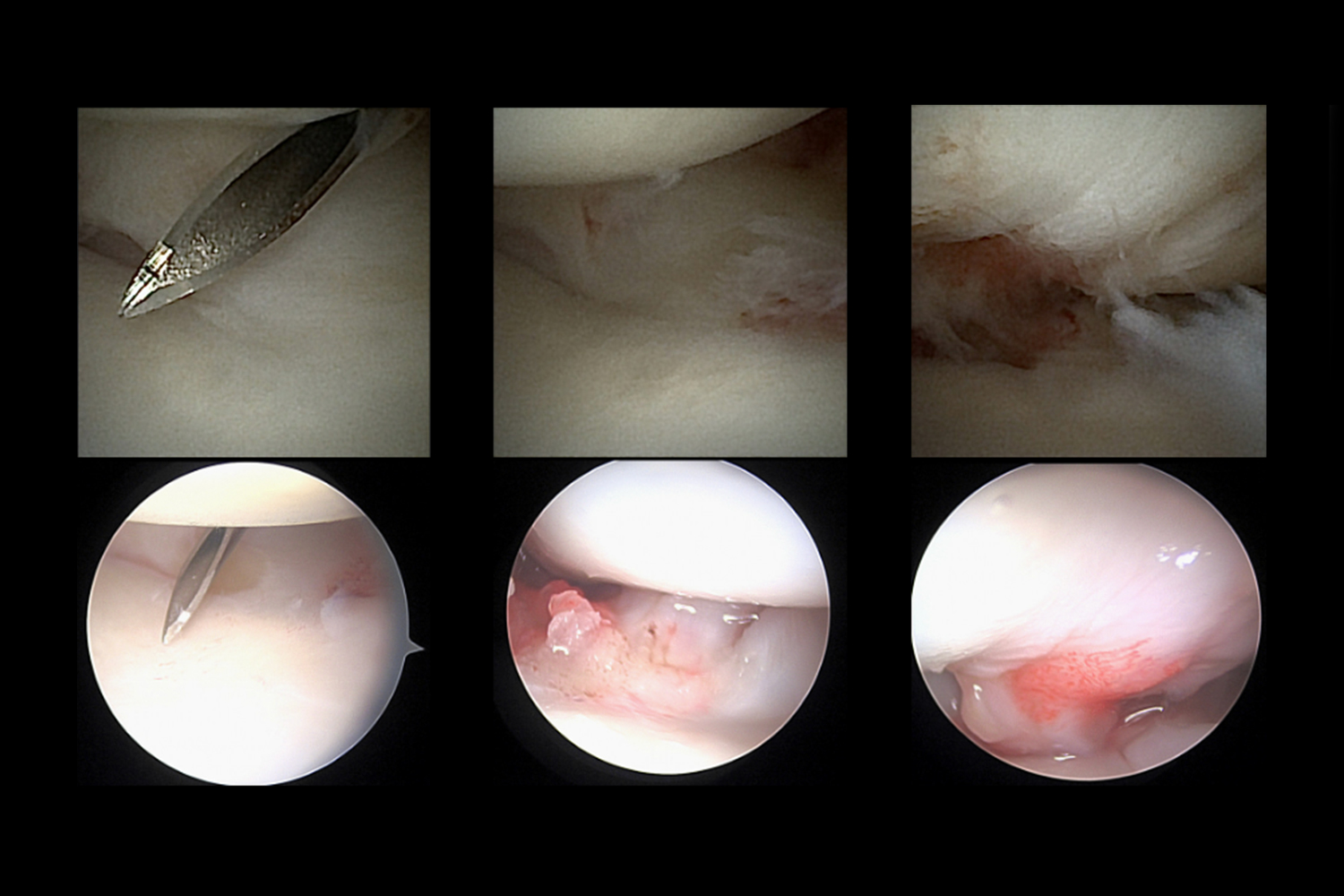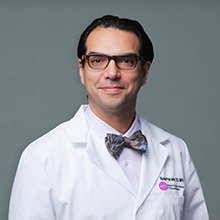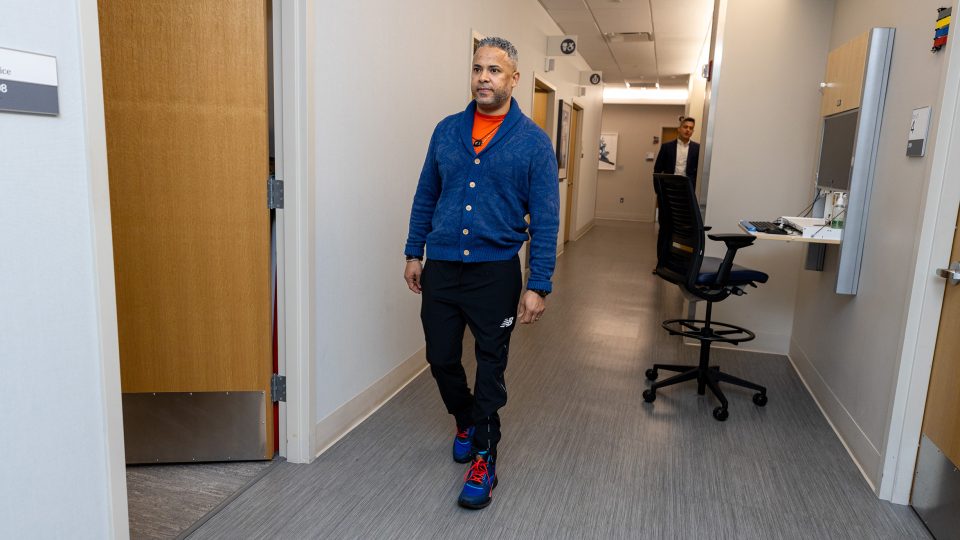A study of 20 patients led by NYU Langone Health researchers affirms that needle arthroscopy matches the diagnostic accuracy of conventional wrist arthroscopy. The study was presented at a recent meeting of the American Society for Surgery of the Hand.
“There was never a case where we couldn’t see everything we needed to see, which was a surprising finding,” says orthopedic surgeon and study lead author Nader Paksima, DO, MPH. “I thought that was going to be one of the limitations of the needle scope when we first started out the study.”
Although the image quality of the smaller scope is marginally lower, Dr. Paksima says it still provides full diagnostic capabilities. “Once you get used to it, and our study proves it, you can see everything that you can see with the big camera. We didn’t miss anything with the needle scope,” he says.
“Once you get used to it, you can see everything that you can see with the big camera. We didn’t miss anything with the needle scope.”
Nader Paksima, DO, MPH
The smaller scope, in fact, provides better access to the mid-carpal joint and better visualization of the scapho-trapezium-trapezoid and carpometacarpal joints. “Cartilage damage to the mid-carpal joint is minimized by the needle scope because it’s much smaller and much easier to insert than the standard arthroscope,” he adds.
Setting Up a Comparison
Since the 1980s, surgeons have used a 2.7-mm wrist arthroscope to evaluate, diagnose, and treat a range of carpal pathologies, especially ligament and cartilage injuries not easily seen on X-ray. Wrist arthroscopy offers direct visualization of the joint surface, articular cartilage, ligaments, and any inflammation such as synovitis.
The newer 1.9-mm needle arthroscope with a flexible tip provides an even less invasive option, yet until this study, it had not been specifically assessed for its carpal pathology evaluation and diagnostic capabilities as compared to conventional arthroscopy.
For the new study, Dr. Paksima and colleagues at NYU Langone’s Hand Center used the needle arthroscope to evaluate each patient for synovitis, cartilage damage, and integrity of the volar, scapholunate, and lunotriquetral ligaments, as well as the triangular fibrocartilage complex.
After completing a survey regarding the visualization and diagnosis, the surgeons performed a conventional wrist arthroscopy, followed by a second survey to compare the two techniques. As part of the evaluation, they also compared how well the scopes visualized ten landmarks within the wrist joint.
A Less Invasive Alternative
Because the bigger camera on the 2.7-mm scope provides a somewhat larger and better picture, switching to the smaller camera requires an adjustment period, Dr. Paksima says.
The typical 30-degree angled view afforded by a standard arthroscope allows surgeons to rotate the camera and see a relatively large surface area. By contrast, the needle scope provides an end-on view, akin to looking through a telescope. The needle scope’s flexible tip, however, allows for easy manipulation of the camera to widen the field of view and the surgeons reported no difference in the ease of use.
“It works very well, and it’s reliable; in the future, I imagine doing the needle scope in a less invasive setting like an office or a procedure room.”
“I was concerned that with an end-on view, I wouldn’t be able to look around the corner within joints,” Dr. Paksima says. “What we found in our study was that we were able to see everything, even with a needle scope, and that may have to do with the flexibility of the tip because it can bend around things.”
Based on the encouraging results, Dr. Paksima has switched to using the needle arthroscope on its own for patients who present with carpal pathologies.
“What’s exciting is that it works very well, and it’s reliable; in the future, I imagine doing the needle scope in a less invasive setting like an office or a procedure room,” he says.
For a ligament sprain, for example, he could take a look under local anesthetic, make a diagnosis, and provide treatment—all in the same setting. “I’m not doing that yet, but that’s what I’m working toward,” he says.






